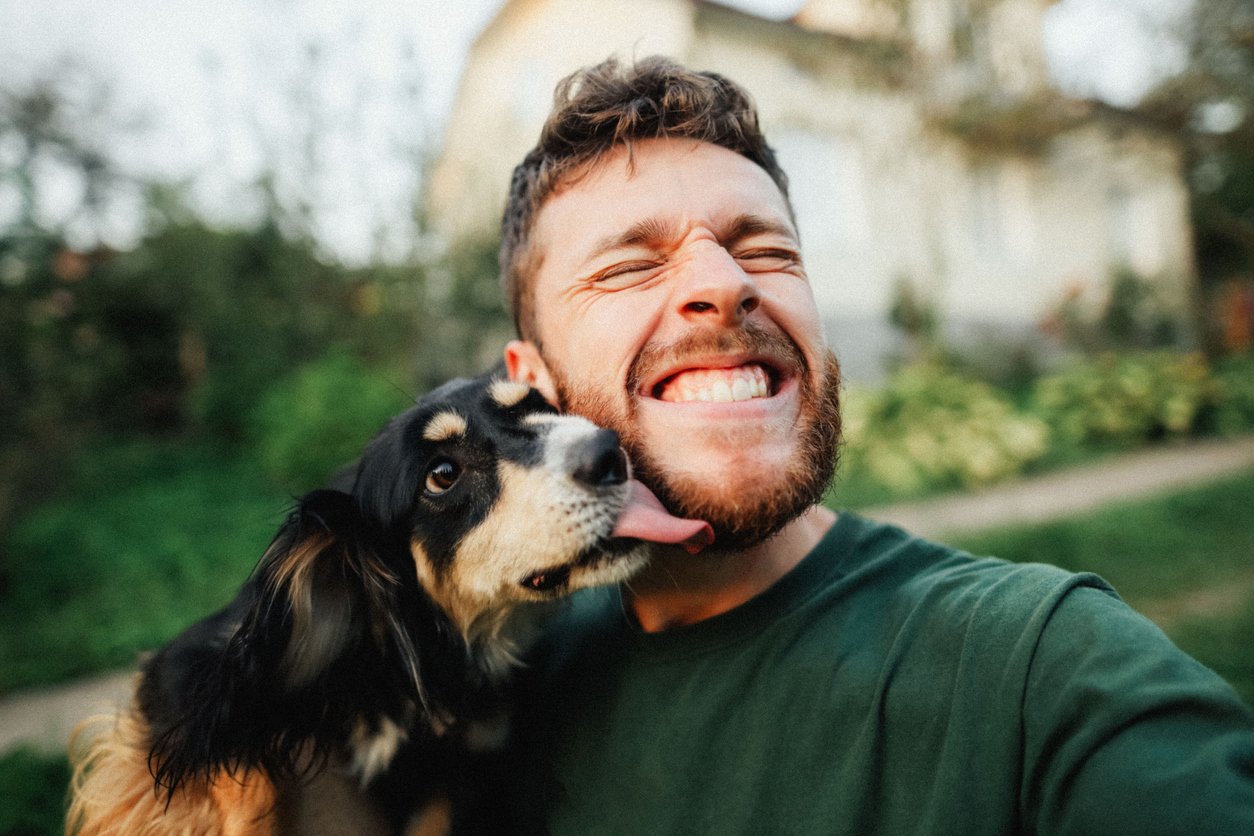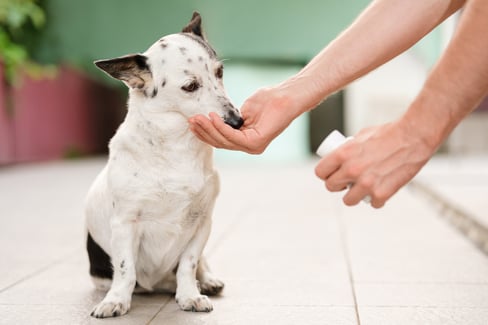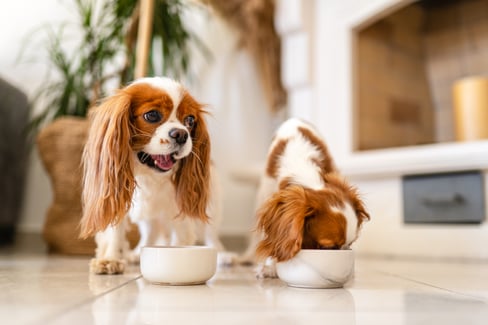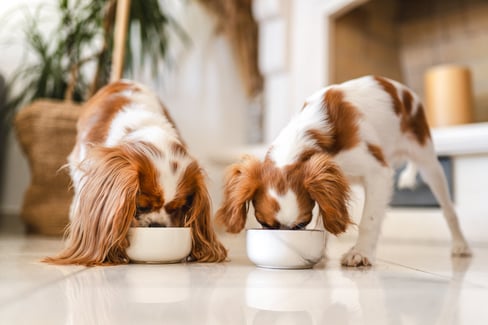Table of Contents
The health and happiness of our furry best friends is extremely important. As dog owners, we’re always looking for products that make taking care of our pooches easier and more effective so that they can live their best lives.
It’s estimated that pet owners in Canada spend around $357–$447 per year on essential pet expenses, including dog products like bowls, collars, leashes, toys, and more. In the United States, that number rises to $730 per year.
While we’re willing to spend money on dog products to keep our pooches happy, we also want to ensure that we’re not wasting our money on low-quality or needless products.
With so many different types of pet products on the market, it’s easy to get overwhelmed when you’re trying to decide whether you should invest in the latest trending dog products or save your money for something that’s actually going to improve the life of your pet (and last longer than a day or two before they chew it up!)
In this article, we explore a wide range of top dog products and give you insight into what you should be looking for to differentiate good dog products from not-so-good ones.
Key Types of Dog Care Products
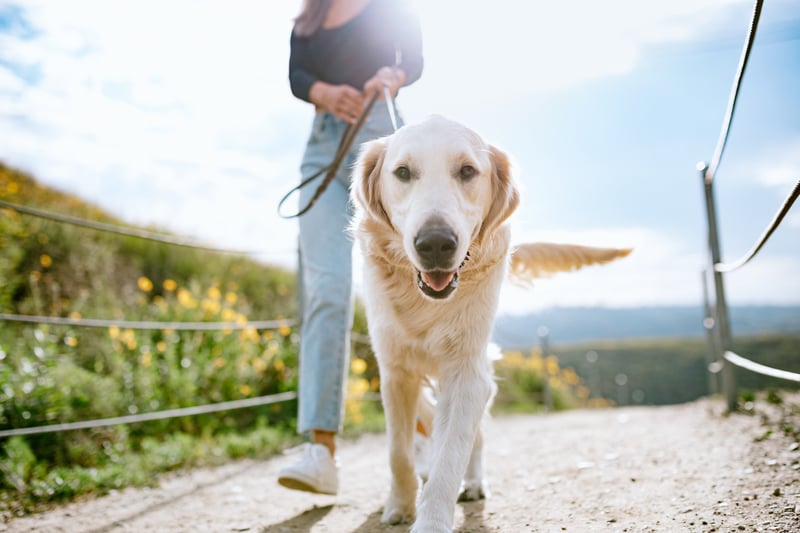
Given the sheer size of the dog product market, it makes sense that there is a wide range of different types of the best dog products to choose from. Some of these are essential supplies like food and supplements, while clothes are more fun like toys and novelty items.
1. Food
Your pup needs to eat, but deciding which type of food to feed your dog can be difficult. This is especially true when you look at pet food labels—the different formatting, ingredients, and recommendations they each list can be dizzying, especially when you’re unsure what to look for! Some tips to keep in mind when looking for food for your pup include:
- Decide on the type of food—wet, dry, raw, or a combination. Everyone is going to have a different opinion on what they think is better, but choosing a consistent diet for your pup is important. Your dog is an individual, just like you, so one type of diet might work better for them compared to another. If your dog prefers the texture and crunch of dry food, then give them that! If you are concerned about their moisture intake, incorporate wet food into their diet. If they have allergies or digestive issues, looking into a raw food diet for dogs might help alleviate their issues. Be sure to get the advice of your veterinarian or a dog nutritionist if you have concerns about your dog’s diet.
- Choose food based on life stage. Puppies typically need more calories in their diet compared to an adult dog. Look for a nutritional statement on the dog food that states what life stage the food is appropriate for. If you have a working dog, they may also need more calories or more of a certain vitamin or mineral.
- Whether the food is nutritionally complete or not. Sometimes dog treats can look like dog food, especially if it’s sold in similar packaging. The best way you can avoid making the mistake of feeding your dog a treat as their daily diet is to look for a statement of nutritional completeness on the label. If it’s a nutritionally complete product and is sold in Canada, the United States, or Europe, it will have a statement of nutritional completeness that will include the life stage that the food is meant for and whether it can be fed on its own or if it’s a product meant for supplemental feedings only. Usually, this statement is bolded or otherwise highlighted somewhere on the packaging so it’s easy to spot.
- Know the difference between meat, meat byproducts, and meals. When you’re reading a dog food label, you’ll likely notice a few different types of meat or poultry listed, including meat (or poultry), byproducts, and meals. Meat refers to the animal’s flesh and fatty tissues, sinew, gristle, and other components that you’d typically find in animal flesh. Byproducts, on the other hand, are organs, fatty tissues, and bones. With meat (like beef or lamb) byproducts do not include fur or hair, but with poultry (chicken, turkey, duck), byproducts may include feet or heads. meals are second to last on the list. Meals refer to blood, hair, hooves, horns, skin, and hide. Finally, there are byproduct meals—which are anything left over, including stomach contents, fecal matter, and feathers.
2. Supplements
For many dogs, supplements are an important addition to their daily diet. When choosing a supplement for your dog, you should be sure you know how to properly read a supplement label. Most pet supplements have 50-80% inactive ingredients, which can be fillers, additives, binders, and more (active ingredients are directly therapeutic, like glucosamine in a dog joint supplement). As you can see, these “extra” ingredients can make up the majority of the supplement, meaning that dosages are higher. With a higher dosage, you use more of the product faster, not to mention that your pet is ingesting stuff they don’t need.
But there is a way to tell how many active ingredients your pet is getting in a supplement versus inactive.
For example, TRI-ACTA has a serving size of 1000 mg. When we break down each ingredient, you can easily see that they add up to 1000 mg (500 mg of glucosamine for dogs, 375 mg of Methylsulfonylmethane, also known as MSM, and 125 mg of Chondroitin sulfate). TRI-ACTA contains no additional ingredients aside from the active ones. So when you’re looking at a supplement label, look at the serving size and the amount of each ingredient per serving, and with some simple math, you should be able to determine how much therapeutic value your pet is getting from each dose.
TRI-ACTA H.A. for Pets
Our maximum strength formula is optimally designed to accelerate the formation of cartilage, minimize inflammation, expedite the healing process, and improve joint conditions.
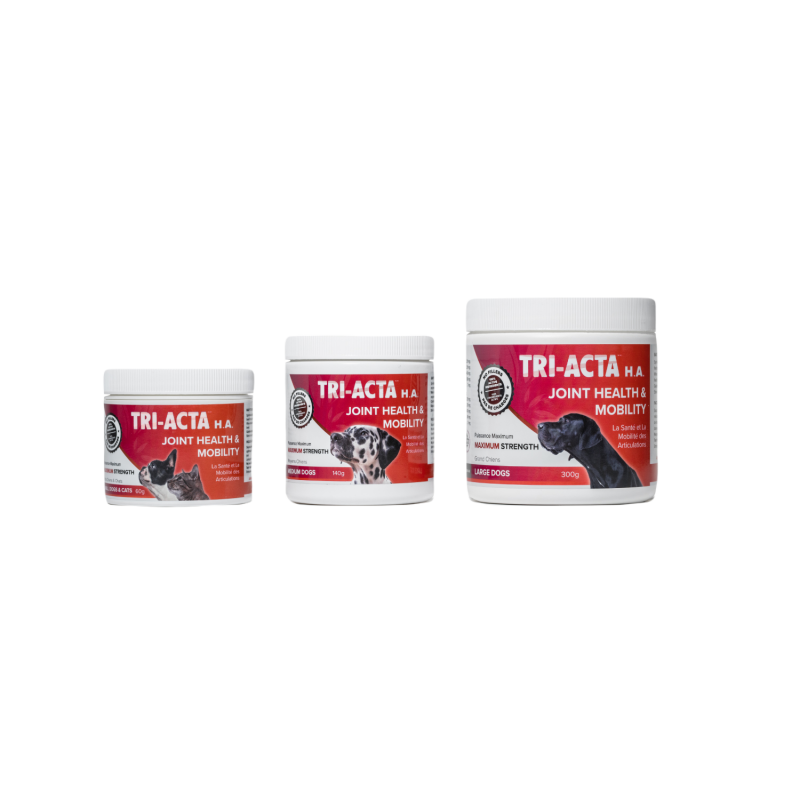
3. Grooming Supplies

Proper grooming is an important part of owning a dog. The breadth and type of grooming supplies you’ll need heavily depend on your dog’s breed and fur. Long-haired dogs or dogs with thick fur need more extensive grooming compared to dogs with thin, short hair. Huskies, for instance, need much more regular brushing and grooming compared to a chihuahua. Working with a professional dog groomer is recommended, especially if you have a dog with a high level of grooming needs, to ensure that you can maintain their fur properly at home. Some different types of dog grooming products that you may need include:
- Brushes and combs
- Dog shampoo (and in some cases conditioner)
- Nail trimmer
- Dog toothbrush and toothpaste to maintain dental health
4. Identification
Registering your dog and investing in a microchip for your dog is important to ensure that if your dog gets lost, your information can be retrieved so that your dog can be returned to you. Most cities and towns also have or require pet registries, where you register your dog and receive a numbered dog tag in return. This tag is another way a person, should they find your lost dog, can access your information, usually with the help of an authority like a police officer or veterinarian. However, a microchip is a more secure solution since it is surgically implanted into your dog, while a tag can be easily removed or lost.
Sites like Etsy, also have fantastic custom dog tag options from vendors all over the world in various materials, shapes, and styles.
5. Collar and Leash
Having a collar that fits your dog properly as well as a leash is important for when you want to take your dog for a walk or otherwise out in a public place. Most cities and towns require that your dog be on a leash in certain areas as well, such as parks. Several types of leashes are available on the market, some better for training and others fine for general walking.
- A standard dog leash is usually made of an interwoven nylon material, similar to a seatbelt. However, some standard leashes can be made with leather, cotton, rubber, and chain link. It usually has a clip on the end to attach to a collar or harness and is best for everyday walks and basic training. A standard leash usually measures between 4 and 8 feet (around 1–2 metres).
- Retractable dog leashes allow you to vary the length of the leash to give your dog more freedom. They usually extend anywhere from 4–30 feet (1–10 metres) and have a locking mechanism so you can control the length properly. There are some risks for using these types of leashes though, such as the locking mechanism failing unexpectedly. You may also inadvertently teach your dog to “pull” using a retractable leash, especially if they get used to the idea that if they want to go further, they can keep walking and get more length.
- Adjustable leashes are a happy medium between standard and retractable leashes, allowing the length to be adjusted to a certain point using clips or loops. This allows you to maintain control while not encouraging your dog to pull.
6. Toys and Enrichment
Dogs need entertainment and stimulation just like humans do! Buying toys for your dog is important to give them a chance to play on their own and also with you. There are, of course, the standard dog toys like balls, frisbees, ropes, and toys meant for them to chew, but there are also other types of enrichment toys and activities that you can try:
- Puzzle feeders are a great way to stimulate your dog’s mind. With a puzzle feeder, you put a treat inside of a toy, whether it be a ball or a snuffle mat, and your dog has to figure out how to get the deliciousness out.
- A doggy ball pit is another treat-finding activity that your dog will love. A regular ball pit meant for children is a fine option. After filling the pit with plastic balls, sprinkle some treats or kibble in the pit. As your dog moves around trying to get the food, the balls will shift so they will have to continually work for their prize.
- Hide-and-seek indoor scent games are another great way to keep your pup entertained when you’re stuck inside. All you need is a few containers or boxes. Simply hide their favourite treat in one of the receptacles, and then watch your dog try to figure out which one their treat is in by using their nose.
What to Look For in Top Dog Products
There are a lot of different types of dog products on the market. Navigating the different brands and prices is one thing, but there are also considerations on where the products were manufactured and their safety.
The table below outlines some key considerations to keep in mind when trying to identify top dog products versus not-so-great ones:
|
Consideration When Choosing Top Dog Products |
Why it’s Important |
|
Where it was manufactured and how |
Not every country has the same regulations and oversight when it comes to pet product production. Look for statements of quality on the product packaging, and investigate further before purchasing if necessary (contact the company directly with questions, do online research, etc.) |
|
Reasonable/logical claims |
If a product is making a claim that seems too good to be true, it likely is. Look for reasonable and logical statements on product packaging, and avoid ones that claim to be a cure-all for every ailment or promise drastic behavioural changes just by using the product. |
|
Ingredients |
The best dog products use high-quality ingredients. Look for a statement on Good Manufacturing Practices (GMP), especially when choosing supplements or other pet health products. |
|
Safety and appropriateness |
Essential safety considerations for most dog toys surround your dog’s size, activity level, and their individual behaviour. A toy that’s perfectly safe for one dog might be a bad choice for another. Choose appropriately sized toys, supervise your dog during play, and avoid toys with parts that they could potentially ingest. |
Our Recommendations for the Best Dog Products
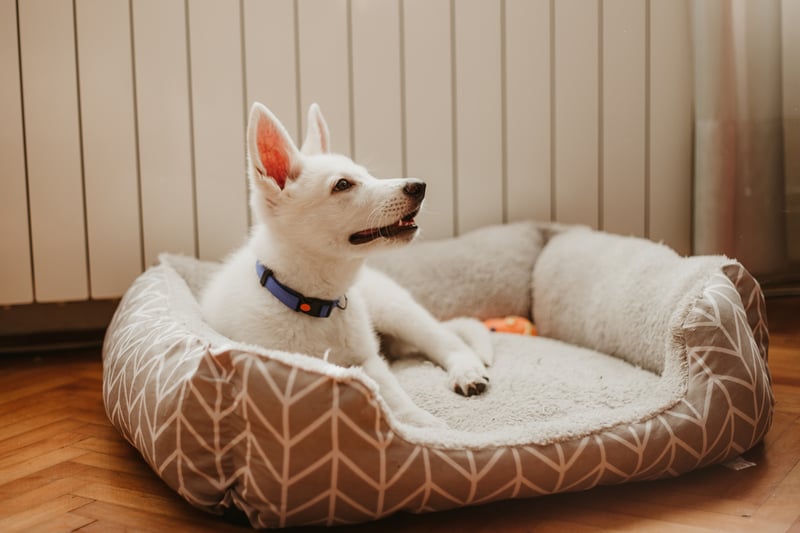
Given the vast number of dog products on the market, we took a look at a wide range of dog products from collars and leashes to travel products. Here are our best dog product recommendations:
|
Best Selling Dog Products |
Dog Home Products |
Dog Enrichment/Toys |
Best Grooming Products |
|
|
|
|
Trending Dog Products: What Is & Isn’t Worth It
You’ve probably seen a ton of trending dog products on the internet and are wondering if they are worth considering. This section takes a closer look at some of these popular dog products and gives insight into whether they are worth using for your pooch or not.
1. Biothane Dog Wear: Worth It
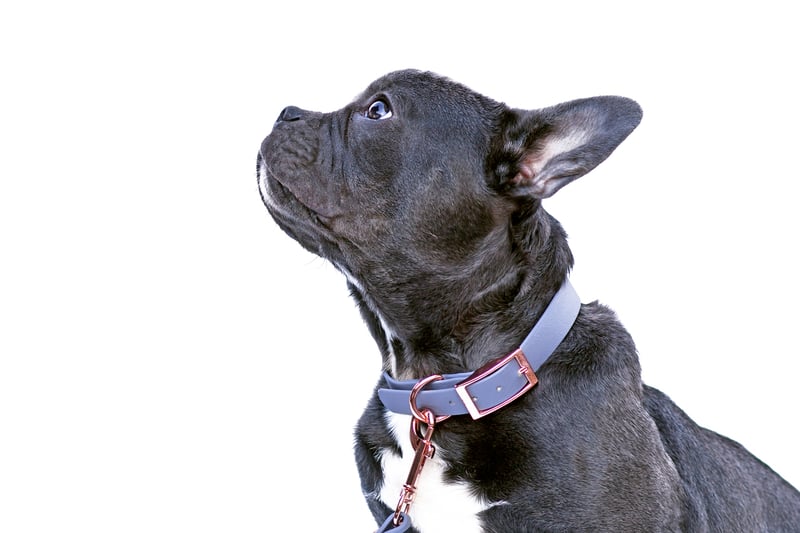
Biothane is a material that can be used to manufacture dog products like leashes, collars, harnesses, and more. The term “Biothane” is actually a brand name that refers to the nylon-coated webbing material that these products are often made with. It’s the same sort of situation with products like Kleenex and Band-Aids, where the brand name has become a common name for the product instead of facial tissues or adhesive bandages. Biothane is an American company that came up with the nylon-webbing material.
Biothane is water and stain-resistant, comes in a wide variety of colours, and can be decorated with different hardware like metal grommets or decorative studs. It can also resemble the appearance of leather, making it a great option for dog owners who like the look of leather but want a vegan alternative to it.
2. Vegan Diets: Not Worth It
With vegan diets becoming more and more popular among people, it’s only natural that some dog owners would start to wonder if putting their dog on a vegan diet would be a good thing. The answer, as expected, is that it depends.
Usually, dog owners put their dogs on a vegan diet because it aligns with their own beliefs as a person, but sometimes it can actually be recommended by a veterinarian because of the dog’s allergies. Dogs can eat a variety of foods as omnivores, including carrots, broccoli, leafy greens, pumpkin, and more. But it’s not as easy as just replacing your dog’s kibble with veggies; you need to do extensive research, and it’s recommended that you speak with a pet nutritionist to develop a vegan diet that will work for your dog.
The problem with a vegan diet is that there is a lot of room for error. Dogs need a significant amount of protein in their diet and certain vitamins and minerals, including calcium, phosphorus, B vitamins, and iron. These components are most commonly found in meat and can be difficult to replace with vegetables.
- Inadequate protein intake (dogs typically need 15–30% of their diet as protein) can result in weight loss, muscle loss, weakness, poor digestion, and fluid build-up in their abdomen.
- Animo acid imbalance (another common ingredient found in meat) can lead to heart problems and other illness
- Vitamin and mineral deficiencies can cause or contribute to a host of health issues for your dog, including hair loss, skin problems, allergies, and more.
So while a vegan diet is possible for your pooch, it’s usually not recommended as feeding your dog a diet that includes animal protein is much safer and easier.
3. Pet Cameras: Worth It
While kind of a gimmicky product and certainly not a replacement for direct supervision, pet cameras can be a great way to keep an eye on your pet while you’re away. These cameras come in a range of types, but one of the most popular is the Furbo pet camera. This camera can be easily placed in a room and rotates 360 degrees so that you can view your dog wherever they are. You can also dispense treats with it to interact with your dog and talk to them through the camera, which can be useful for calming them down.
4. Rawhide: It Depends
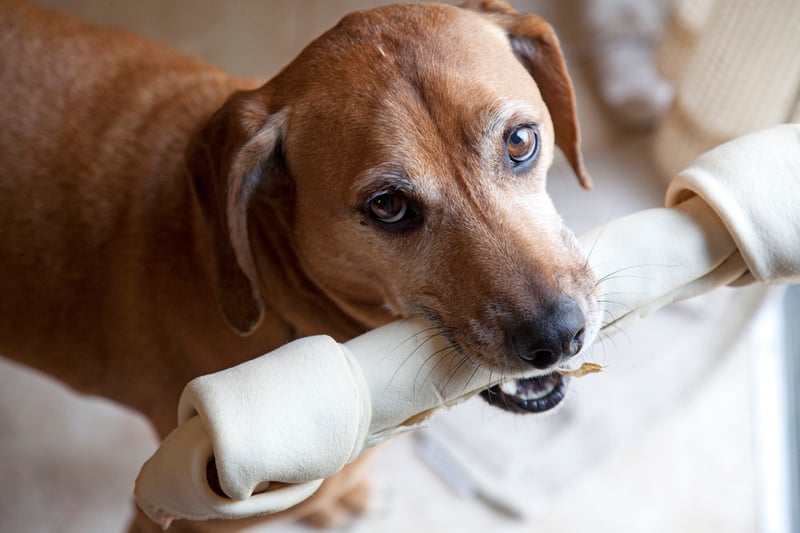
Some dog owners have good experiences with rawhide, while others experience serious issues with them—like a piece of the rawhide getting stuck in their dog’s intestines and resulting in their dog needing surgery. So should you get your dog a rawhide bone or avoid it altogether? The answer is that it depends.
- If you want to try giving your dog a rawhide bone, pay attention to where it was made. The rawhide manufacturing process uses the leather industry’s leftovers. The hides are placed in salt brines to slow their decay and finally sent to tanneries to be soaked and treated with chemicals such as lime to help separate the fat from the skin before being rinsed. Most rawhides are made in China, where the quality control in terms of removing harmful chemicals from the final product can be questionable. Typically rawhides made in Canada or the United States are of higher quality because more strict regulations surround quality control.
- Do not buy coloured, dyed, or flavoured rawhide products. Colours and dyes are unnecessary for your dog’s enjoyment of the rawhide, as they serve to make the product look pretty and nothing else. Also, some dyes and colour agents can cause gastrointestinal upset in some dogs. Flavoured rawhide products might seem like a good idea to encourage your dog to chew, but it also encourages them to eat the hide, increasing the chances of them swallowing pieces that could get lodged in their digestive tract.
Other important considerations that you should keep in mind when giving your dog rawhide products include:
- Ensuring that you select the right size of rawhide for your dog. If you get a rawhide that’s too small for your dog, it increases the risk of them swallowing a piece of it and it getting stuck in their stomach or intestines.
- Monitoring your dog while they are chewing. Don’t just give your dog a rawhide walk away, watch your dog while they are chewing to make sure that they don’t accidentally break off a piece and swallow it. Teaching your dog the “drop it” command is also important so you can retrieve the rawhide should you need to.
- Remove any pieces from the rawhide that are old, dirty, or look like they can be easily torn off during chewing. Doing this decreases the chances of your dog swallowing a piece of rawhide or ingesting something that is stuck to it that could irritate their stomach.
Summary
Caring for your canine companion involves an array of products aimed at enhancing their health, comfort, and happiness. The diverse market offers a wide selection, from essential dietary needs like food and supplements to safety-focused items like identification tags and grooming supplies. Navigating this vast landscape requires consideration of various factors, such as quality, safety, and practicality.
One important dog product that you can give your dog on a regular basis is TRI-ACTA. Since many dogs will experience joint issues in their lifetime that cause pain and reduce their mobility, being proactive with TRI-ACTA helps ensure that your pup stays active well into their later years.
Purchase TRI-ACTA online or learn where to buy at a store near you.
TRI-ACTA H.A. for Pets
Our maximum strength formula is optimally designed to accelerate the formation of cartilage, minimize inflammation, expedite the healing process, and improve joint conditions.

Newsletter Signup
Subscribe to our newsletter to receive the latest news and exclusive offers.
.jpg?height=2000&name=Cliick_Integricare-DISPLAY-REVISEDV2%20(1).jpg)
Proactive & Therapeutic Joint Supplements
When given daily, Integricare joint supplements recover bone and joint injuries faster and help prevent mobility injuries from happening in the first place.

